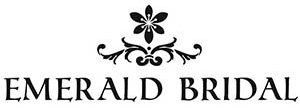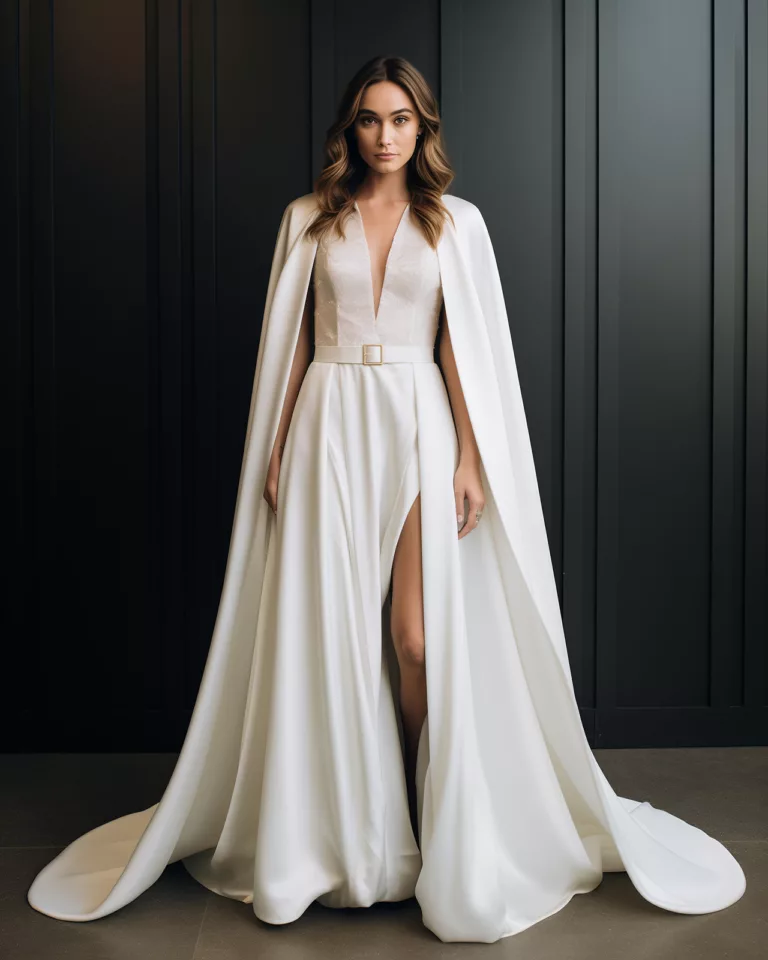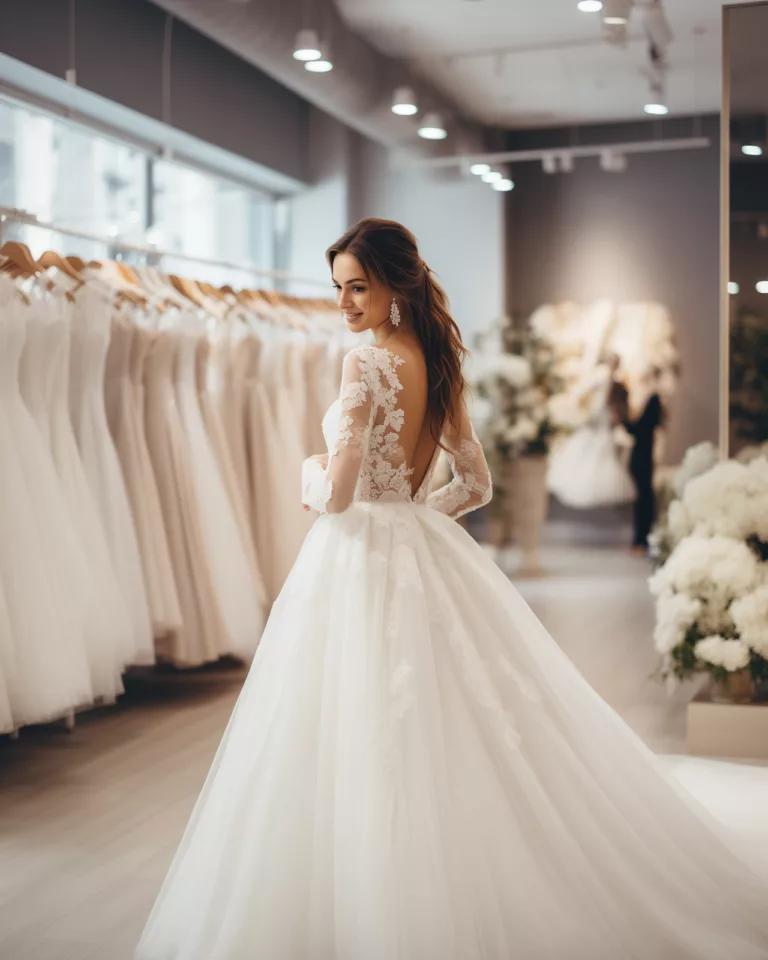Wedding Dresses: Everything You’ll Ever Need To Know About Bridal Gowns
Wedding dresses are available in a wide range of shapes, sizes, colours, styles, fabrics, and price ranges. Whether you are looking for a traditional white gown, a colourful dress, or a non-traditional style, there is a wedding dress out there to suit your personal taste and budget.
Many gowns can be purchased off-the-rack, while others can be designed specifically for you, ensuring that your wedding dress is one-of-a-kind and perfect for your big day.
Here is some information to help you understand more about the wedding gown and the many options available to you.
Jump to:
- Also known as
- Shape vs styles
- Wedding dress hemlines
- Wedding dress necklines
- Wedding dress sleeves
- Wedding dress materials and fabrics
- Wedding dress embellishments
- Famous wedding dresses
- Iconic yet non-traditional wedding dresses
- Can I wear more than one wedding dress?
Wedding dresses are also known as
Wedding gowns are called by a variety of names, depending on the culture and the context in which they are used. Some common terms for wedding dresses include:
- Bridal gown: This is the most common term used in the Western world to refer to a wedding dress. It derives from the word “bride,” and is used to describe the dress that the bride wears on her wedding day.
- Wedding gown: This term is similar to “bridal gown,” and is often used interchangeably with it. It derives from the word “wedding,” and is used to describe the dress that the bride wears at her wedding ceremony.
- Bridal dress: This term is similar to “bridal gown” and “wedding gown,” and is often used interchangeably with them. It derives from the word “bridal,” and is used to describe the dress that the bride wears on her wedding day.
- Wedding dress: This is another common term used to refer to a wedding gown. It derives from the word “wedding,” and is used to describe the dress that the bride wears at her wedding ceremony.
In other cultures and languages, wedding gowns may be called by different names. In India, for example, wedding dresses are often called “lehenga” or “lehenga choli,” while in China, they are often referred to as “qipao” or “cheongsam.” In Japan, wedding dresses are often called “shiromuku” or “uchikake,” while in Korea, they are often referred to as “hanbok.”
Is there a difference between wedding dress shapes and styles?
Yes, there is a difference.
Wedding dress shapes refer to the silhouette or outline of the dress. Some common wedding dress shapes include A-line, ball gown, mermaid, sheath, trumpet, empire waist, and tea length. Each shape has a specific set of characteristics that define it, such as the way it fits the body or the way it flares out at the hem.
Shapes are often referred to as ‘cuts’ or ‘silhouettes’. You can read more about each silhouette by following this link, “A Beginner’s Guide To Wedding Dress Silhouettes”.
Wedding dress styles, on the other hand, refer to the specific design elements of the dress. These can include the neckline, sleeve length, waistline, and fabric choice. Wedding dress styles can vary widely, from traditional and formal to bohemian and casual. Some common wedding dress styles include classic, romantic, vintage, boho, and modern.
Related reading: ‘What is a contemporary wedding dress?’
Wedding dress length (also known as hemline)
The hemline of a wedding dress refers to the length of the dress, and the different types of wedding dress hemlines include:
- Floor-length: This is the most common and traditional type of hemline, with the dress reaching all the way down to the ground, covering the feet and ankles of the bride.
- Tea-length: This type of hemline falls just above the ankles, with the dress ending at mid-calf level. It is a more casual and playful option, and is often paired with heels or wedges.
- Knee-length: This type of hemline falls just above the knees, with the dress ending at mid-thigh level. It is a more modern and versatile option, and is often paired with heels or flats.
- Mini-length: This type of hemline falls above the knees, with the dress ending at the upper thigh level. It is a bold and daring option, and is often paired with heels or boots.
Wedding dress necklines
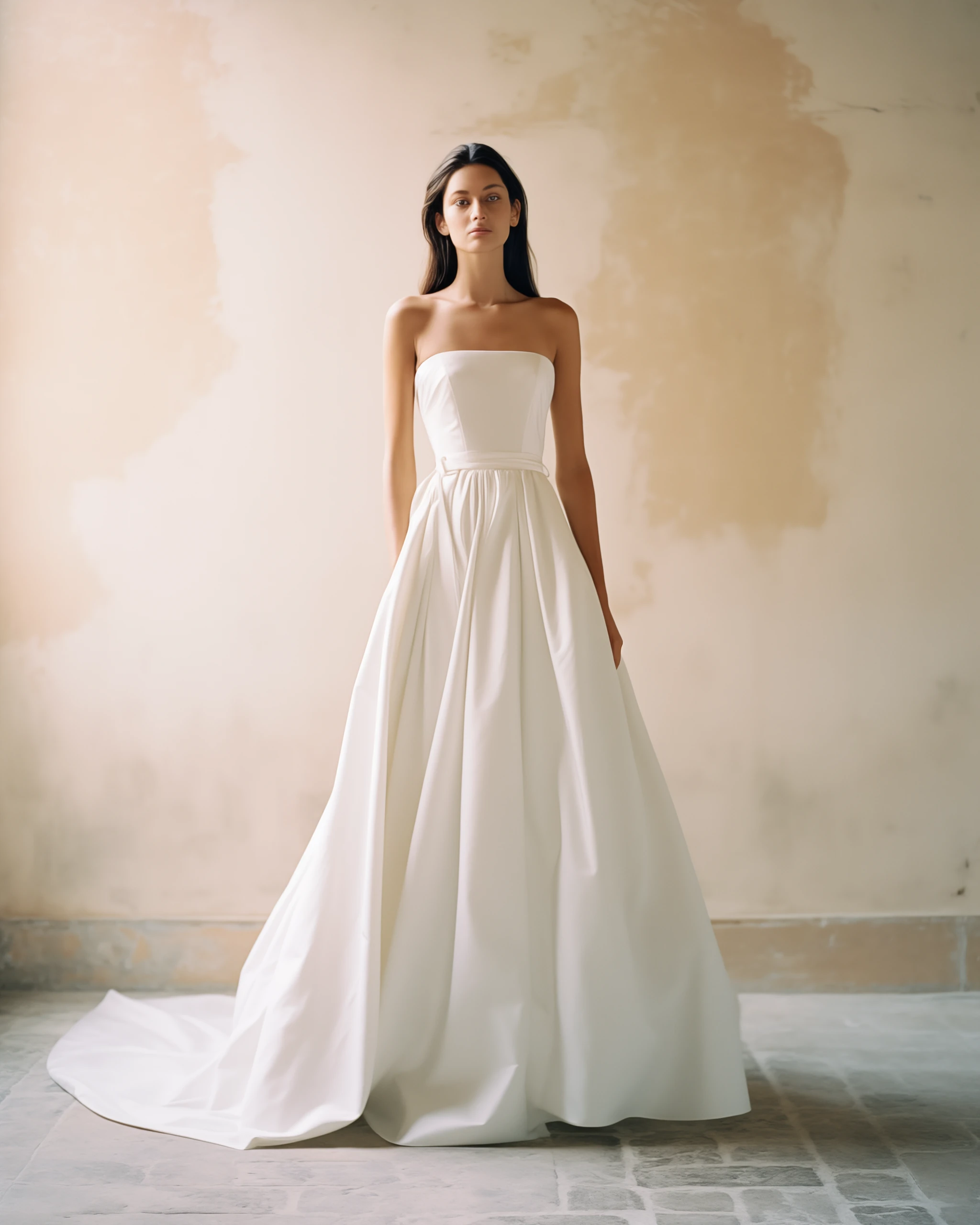
The neckline of a wedding dress is the top portion of the dress that covers the neck and shoulders of the bride. The different types of wedding dress necklines include:
- Strapless: This is a classic and popular neckline, with the dress having no straps or sleeves and exposing the neck, shoulders, and upper chest of the bride. It is a versatile and flattering option, and can be paired with a variety of accessories, such as a veil or a statement necklace.
- Off-the-shoulder: This neckline is similar to strapless, but with the dress extending slightly down the arms and over the shoulders, creating a more romantic and feminine look. It is a good choice for brides who want to show off their collarbones or shoulders, and can be paired with a veil or a statement earring.
- Halter: This neckline is characterised by straps or bands that wrap around the neck, creating a high and open neckline that exposes the upper chest and back of the bride. It is a more modern and edgy option, and can be paired with a veil or a statement bracelet.
- V-neck: This neckline is shaped like a V, with the dress plunging down the centre of the chest and exposing the upper chest and collarbones of the bride. It is a versatile and flattering option, and can be paired with a veil or a statement necklace.
- Sweetheart: This neckline is shaped like a heart, with the dress dipping down in the centre of the chest and exposing the upper chest and collarbones of the bride. It is a romantic and feminine option, and can be paired with a veil or a statement earring.
- Scoop: This neckline is shaped like a scoop, with the dress curving down in a gentle arc across the chest and exposing the upper chest and collarbones of the bride. It is a classic and elegant option, and can be paired with a veil or a statement necklace.
- Square: This neckline is shaped like a square, with the dress extending straight across the chest and exposing the collarbones and shoulders of the bride. It is a bold and modern option, and can be paired with a veil or a statement bracelet.
- Boat: This neckline is shaped like a boat, with the dress extending straight across the chest and then curving down in a gentle arc at the sides. It is a classic and versatile option, and can be paired with a veil or a statement necklace.
Wedding dress sleeves
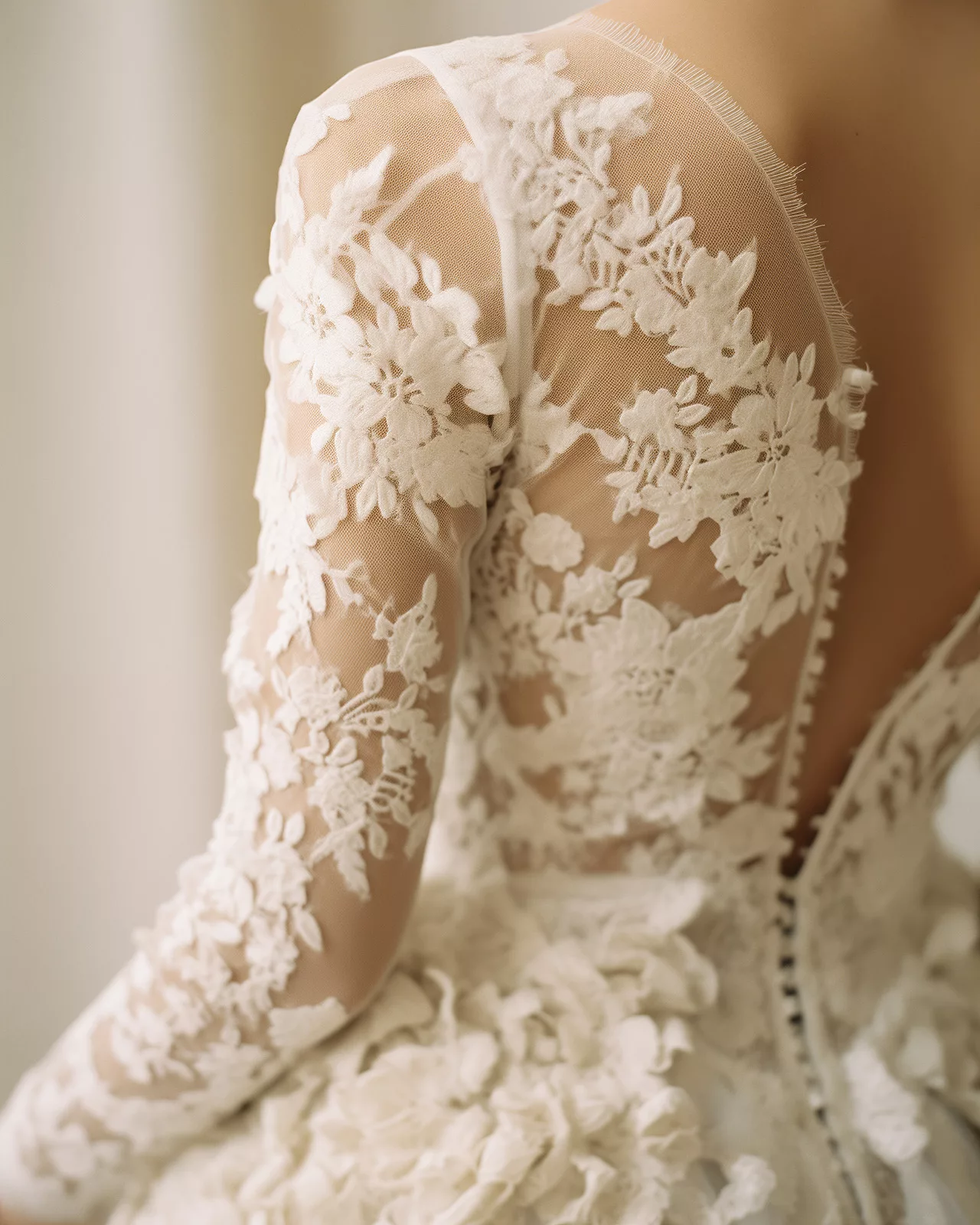
The sleeves of a wedding dress refer to the part of the dress that covers the arms of the bride. The different types of wedding dress sleeves include:
- Sleeveless: This is the most common and popular type of sleeve, with the dress having no sleeves and exposing the arms of the bride. It is a versatile and flattering option, and can be paired with a variety of accessories, such as a veil or a statement bracelet.
- Cap sleeves: This type of sleeve is short and covers the shoulders and upper arms of the bride, ending just above the elbow. It is a more modest and traditional option, and can be paired with a veil or a statement earring.
- Short sleeves: This type of sleeve is longer than cap sleeves, and covers the upper arms and elbows of the bride, ending just below the elbow. It is a more casual and playful option, and can be paired with a veil or a statement necklace.
- Three-quarter sleeves: This type of sleeve is longer than short sleeves, and covers the lower arms and wrists of the bride, ending just above the wrist. It is a more formal and elegant option, and can be paired with a veil or a statement bracelet.
- Long sleeves: This type of sleeve is the longest, and covers the entire arms and wrists of the bride, ending at the wrists or hands. It is a more traditional and formal option, and can be paired with a veil or a statement necklace.
Recommended reading: ‘Ladies, we need to have a talk about sleeves‘
What materials are wedding gowns made from?

Wedding gowns are made from a wide range of materials including silk, satin, lace, tulle, chiffon, and organza. Some dresses may also incorporate beading, sequins, or other decorative elements.
The choice of material often depends on the style and design of the dress, as well as the personal preference of the bride.
- Silk is a popular choice for wedding dresses, as it is a luxurious and elegant material that drapes well and is comfortable to wear.
- Satin is also a popular choice, as it has a glossy finish and a smooth, lustrous texture.
- Lace is a classic material for wedding dresses, and is often used for the bodice or sleeves of the dress.
- Tulle is a lightweight, sheer material that is often used for the skirt of the dress, as it adds volume and a romantic, ethereal quality.
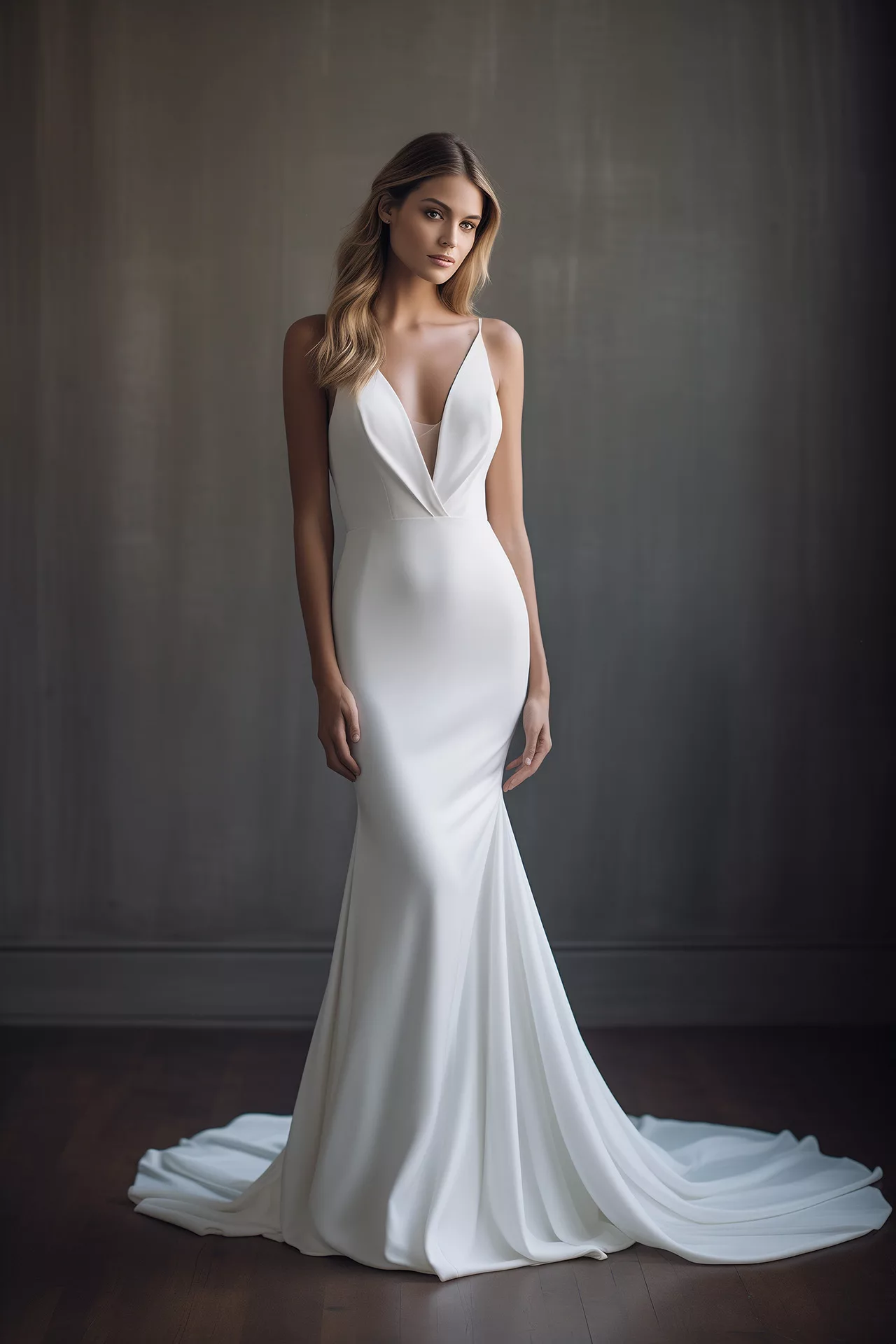
Some brides may choose to have their wedding dress made from eco-friendly materials, such as organic cotton or plant-based fabrics like bamboo or hemp. Other brides may opt for a vintage-inspired dress, made from antique or repurposed lace or other materials.
Wedding dress embellishments
Wedding dress embellishments are decorative elements that are added to a wedding dress to enhance its appearance and add visual interest. These embellishments can include a variety of different elements, such as beads, sequins, pearls, crystals, ribbons, lace, embroidery, and more.
Embellishments are often used to add a touch of glamour and sparkle to a wedding dress, and can be placed on various parts of the dress, such as the bodice, sleeves, hem, or train. They can be used to create patterns, textures, and designs, and can be matched to the overall style and theme of the wedding.
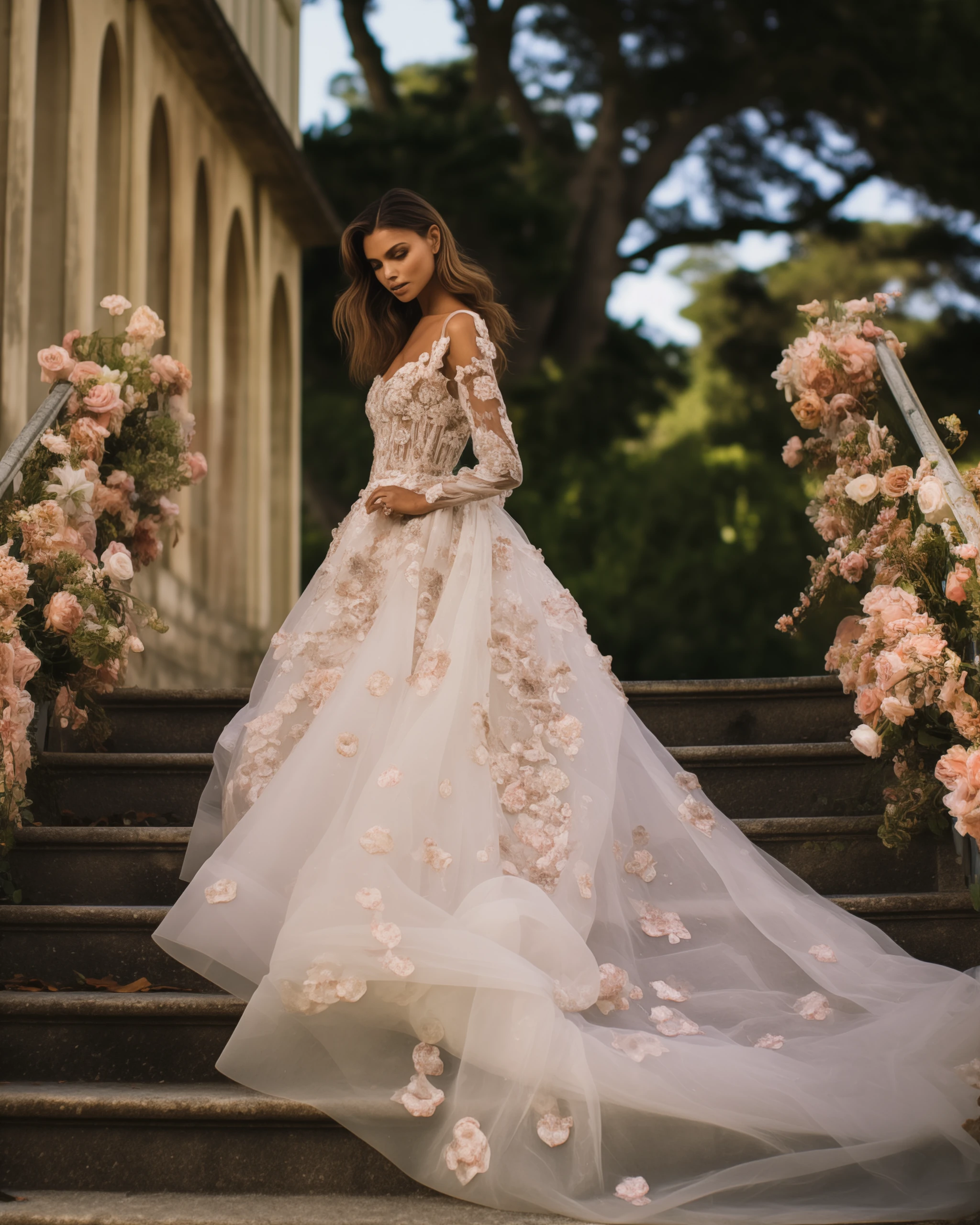
Some wedding dresses may have more subtle embellishments, such as small, scattered beads or delicate embroidery, while others may have more dramatic and eye-catching embellishments, such as large, sparkling crystals or intricate lace patterns.
How wedding dresses differ around the world
Wedding dresses have a long and fascinating history, with a rich array of styles and customs from cultures around the world.
In the Western world, white wedding dresses are a relatively recent tradition, dating back to the 19th century. Before that, brides in Europe and North America typically wore their best dress, regardless of colour.
Some of the earliest known wedding dresses were worn by ancient Egyptians, who favoured white linen as a symbol of purity. In mediaeval Europe, the colour of the wedding dress was often determined by the social status of the bride. Wealthy brides wore dresses in bright colours, while poorer women wore their best, but more subdued, dress.
Over the centuries, wedding dresses have taken on a wide range of styles and silhouettes, from the flowing gowns of the Renaissance to the full-skirted Victorian dresses of the 19th century. Today, there are many different styles of wedding dresses to choose from, including traditional white gowns, coloured dresses, and non-traditional styles like short dresses or jumpsuits.
Other cultures have their own unique traditions when it comes to wedding attire. In India, for example, brides often wear red or other brightly coloured saris, adorned with intricate embroidery and beading. In Japan, brides often wear a traditional kimono, while in China, the traditional wedding dress is the qipao, a form-fitting dress with a high collar and long sleeves.
How have wedding gowns evolved across time?
Since the 19th century, wedding dresses have evolved and taken on a wide range of styles and silhouettes. In the early 19th century, Victorian wedding dresses were characterised by their full skirts and intricate lace and beadwork. In the late 19th and early 20th centuries, the trend shifted towards simpler, more streamlined gowns, with a focus on the natural waistline and A-line skirts.
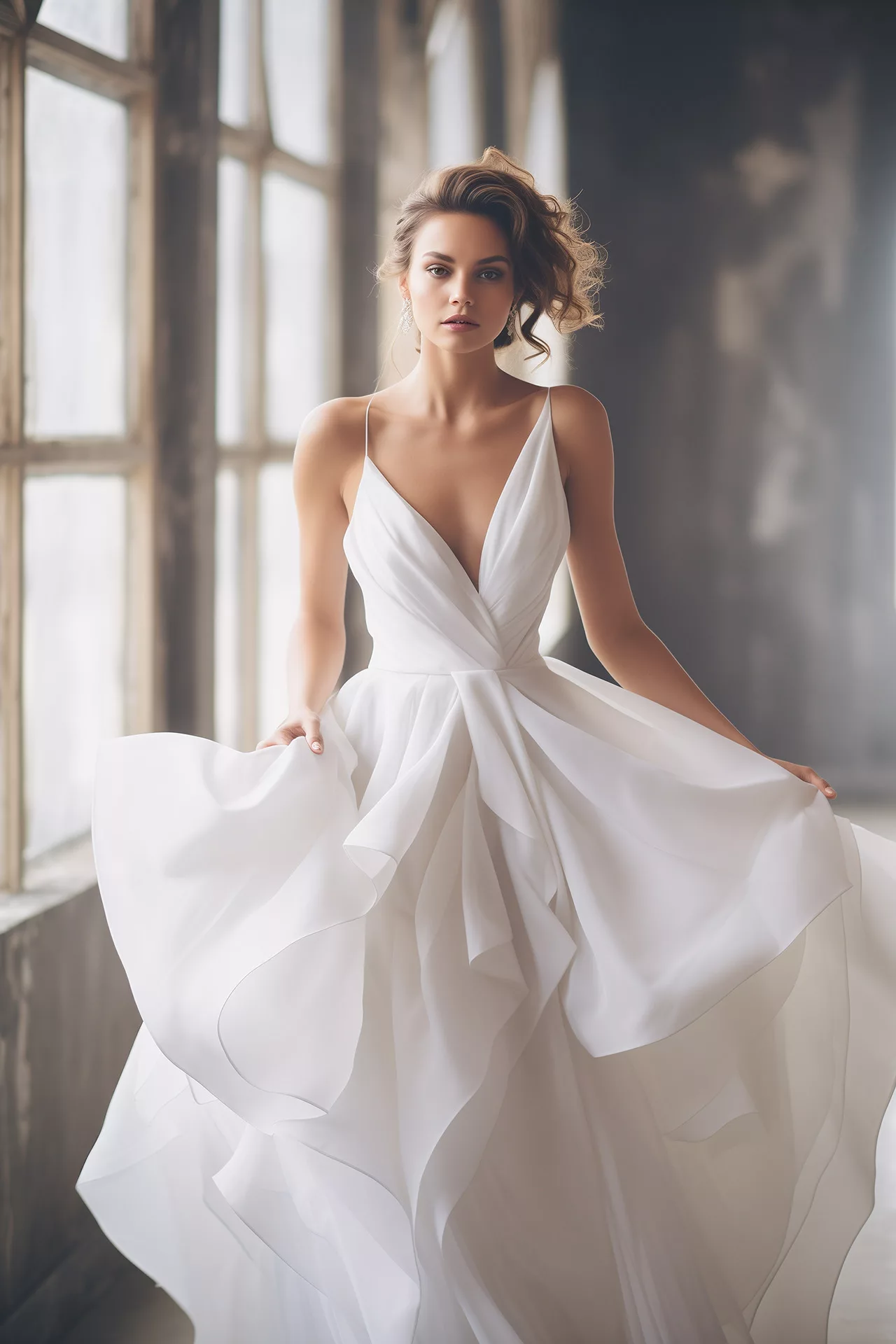
In the decades following World War II, wedding dresses became more diverse, with a range of styles and colours to choose from. The 1960s and 1970s saw the rise of more informal wedding dresses, including short, mini-length dresses and pantsuits. In the 1980s, wedding dresses became more elaborate, with big, puffy sleeves and full skirts.
Famous wedding dresses (of all time)
Some of the most iconic wedding dresses include:
- The dress worn by Queen Victoria at her wedding in 1840. This dress was made of white satin and featured a long train, a deep V-neckline, and a lace and orange blossom trim. The dress was considered a groundbreaking fashion at the time, and set the trend for future brides to wear white on their wedding day.
- The dress worn by Grace Kelly at her wedding to Prince Rainier of Monaco in 1956. This dress was designed by Helen Rose, and was made of silk and lace. It featured a high neckline, long sleeves, and a full skirt with a 25-foot train. The dress was widely admired and is considered one of the most iconic wedding dresses of all time.
- The dress worn by Lady Diana Spencer at her wedding to Prince Charles in 1981. This dress was designed by David and Elizabeth Emanuel, and was made of silk and lace. It featured a dramatic 25-foot train, a deep V-neckline, and puff sleeves. The dress was widely admired, and has become one of the most iconic and well-known wedding dresses in history.
- The dress worn by Kate Middleton at her wedding to Prince William in 2011. This dress was designed by Sarah Burton for Alexander McQueen, and was made of ivory and white satin. It featured a lace bodice, long sleeves, and a full skirt with a 9-foot train. The dress was widely admired, and has become one of the most well-known and iconic wedding dresses of the 21st century.
Iconic yet non-traditional wedding dresses
Some of the most iconic and famous non-traditional wedding dresses include:
- The dress worn by Gwen Stefani at her wedding to Gavin Rossdale in 2002. This dress was a white, custom-made Dior gown, with a plunging neckline, a corseted bodice, and a full, tulle skirt. The dress was adorned with Swarovski crystals and had a dramatic train. The dress was considered a departure from traditional wedding dresses, and helped to set a trend for more non-traditional bridal styles.
- The caped jumpsuit by Solange Knowles at her wedding to Alan Ferguson in 2014. This dress was a white, caped jumpsuit designed by Stéphane Rolland, with a plunging neckline and a flared leg. The jumpsuit was paired with a cream-colored hat and a bouquet of white flowers. The dress was widely admired for its modern and non-traditional aesthetic, and helped to pave the way for more unconventional bridal styles.
- The dress worn by Zara Tindall at her wedding to Mike Tindall in 2011. This dress was a white, lace-trimmed gown designed by Stewart Parvin, with a boatneck neckline and a full, A-line skirt. The dress was paired with a diamond-encrusted tiara and a bouquet of white flowers. The dress was considered a departure from traditional royal wedding dresses, and was widely admired for its modern and elegant aesthetic.
- The dress worn by Sophie Turner at her wedding to Joe Jonas in 2019. This dress was a white, Louis Vuitton gown, with a high neckline, long sleeves, and a full, tulle skirt. The dress was paired with a delicate, lace-trimmed veil and a bouquet of white flowers. The dress was considered non-traditional due to its high neckline and long sleeves, which are not typically seen in wedding dresses.
Can I wear more than one dress on my wedding day?
Some brides choose to wear more than one wedding dress on their big day. This is often because the bride wants to have a different look for different parts of the wedding, such as the ceremony and the reception. For example, a bride may choose to wear a traditional, full-skirted gown for the ceremony, and then change into a more modern and form-fitting dress for the reception.
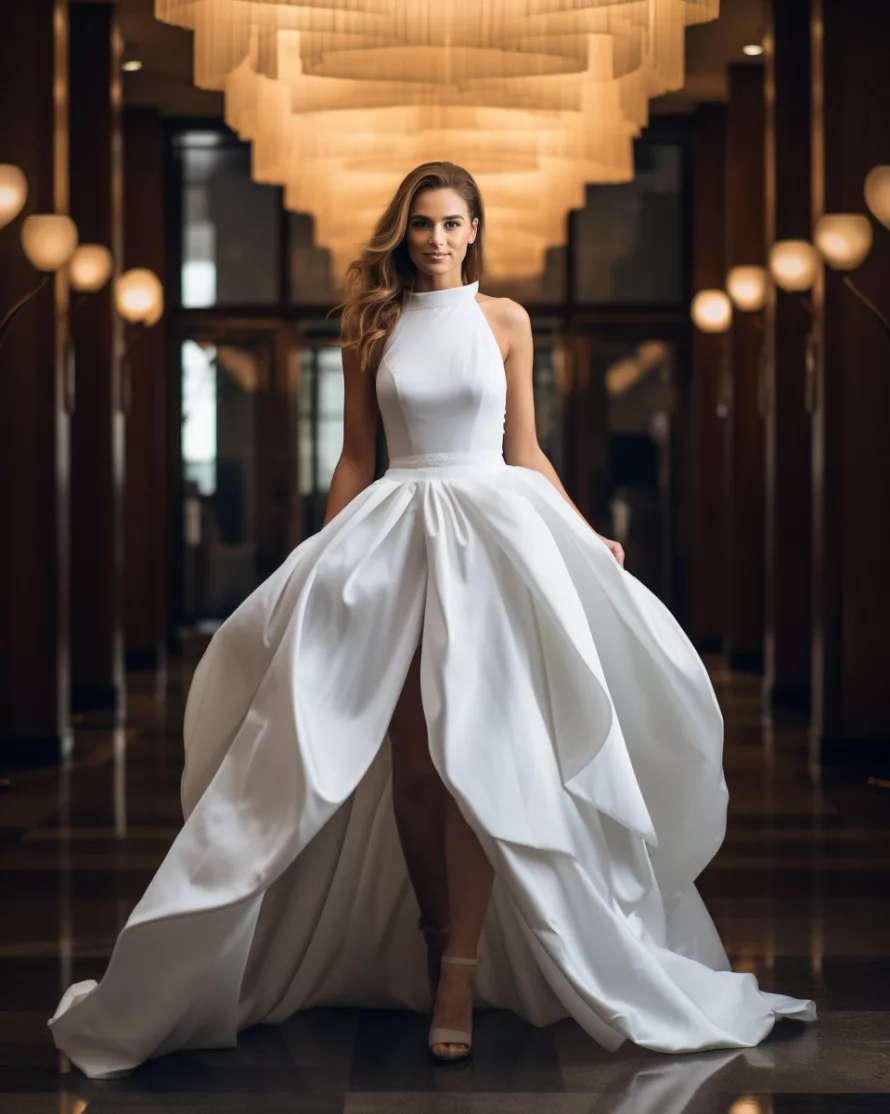
Other brides may choose to wear multiple dresses because they want to incorporate different elements or styles into their wedding attire. For example, a bride may choose to wear a classic, lace-trimmed gown for the ceremony, and then add a statement-making veil or a pair of sparkly shoes for the reception.

Some brides may also choose to wear multiple dresses because they want to honour different cultural or religious traditions. For example, a bride of Indian heritage may choose to wear a traditional red sari for part of the wedding, and then change into a white Western-style gown for the ceremony.
In fact, there have been many celebrities who have worn multiple wedding dresses on their big day. Some of the most well-known and famous celebrities who have worn more than one wedding dress include:
- Kim Kardashian. Kim Kardashian wore three different wedding dresses for her wedding to Kanye West in 2014. She wore a lace Givenchy Haute Couture gown for the ceremony, a sheer, beaded Givenchy Haute Couture gown for the reception, and a white, Balmain minidress for the after-party.
- Kate Moss. Kate Moss wore two different wedding dresses for her wedding to Jamie Hince in 2011. She wore a vintage-inspired, lace-trimmed John Galliano gown for the ceremony, and then changed into a white, sequinned gown by Galliano for the reception.
- Jessica Biel. Jessica Biel wore two different wedding dresses for her wedding to Justin Timberlake in 2012. She wore a pink, Giambattista Valli Haute Couture gown for the ceremony, and then changed into a white, custom-made Giambattista Valli gown for the reception.
- Angelina Jolie. Angelina Jolie wore two different wedding dresses for her wedding to Brad Pitt in 2014. She wore a white, lace-trimmed Versace gown for the ceremony, and then changed into a white, floor-length Atelier Versace dress for the reception.
About Emerald Bridal
We hope you found this guide helpful.
Emerald Bridal specialises in off-the-rack (ready-to-wear) wedding dresses that offer a careful balance between style, affordability, and quality. Our focus is on helping brides find their dream dress so that they look and feel comfortable and beautiful on their big day.
Come visit our Sydney showroom for a personalised fitting.
